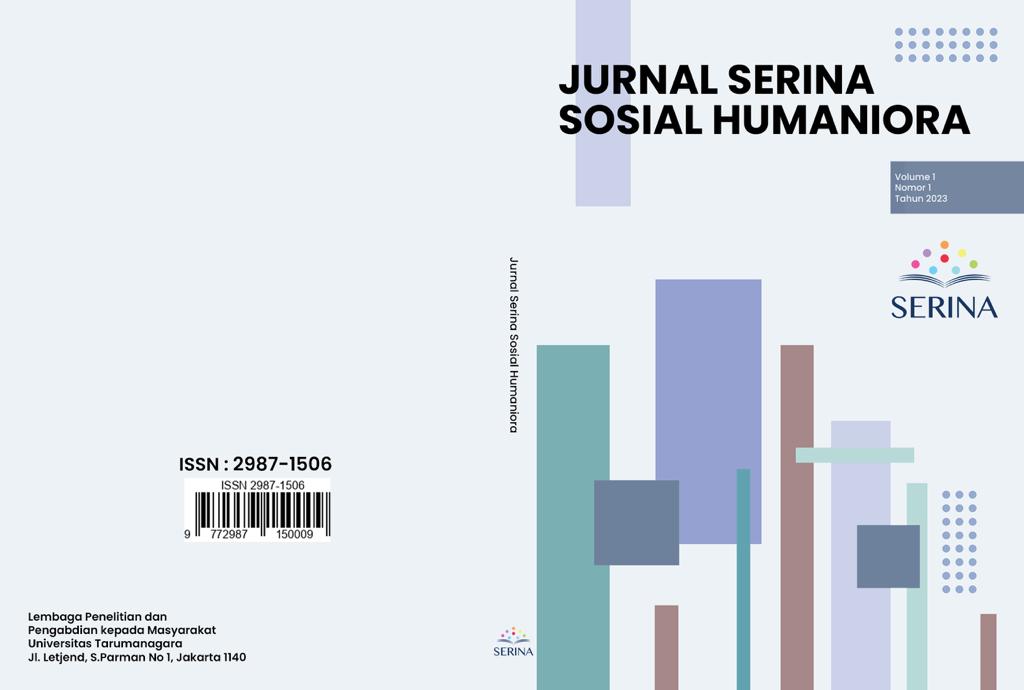EFEKTIFITAS METODE PEMBELAJARAN CYBER UNTUK MENINGKATKAN MOTIVASI BELAJAR PADA MATA KULIAH DESAIN INTERIOR
Main Article Content
Abstract
ABSTRACT
Interior Design courses require high accuracy and learning motivation. Appropriate and interesting teaching methods affect learning motivation. The cyberlearning method is thought to be able to facilitate accuracy and efficiency in the teaching and learning process in interior design courses. The purpose of this research is to increase learning motivation in interior design courses through cyberlearning methods with project-based learning (PjBL) steps. This study was a quasi-experimental study using a two-group post-test design. The learning motivation instrument was adapted from McClelland's motivation theory. The number of participants was 60 students who were divided into two groups. The group of students studied using conventional methods (control group), while the second group of students studied using cyber methods (experimental group). The number of meetings is 10 times. After completing the experiment, both groups measured their learning motivation. The results of the study show that the cyberlearning method can increase student learning motivation in interior design courses. The results showed that students in the experimental group had higher learning motivation than students in the control group using the conventional lecture method.
Keywords: Cyber learning methods, project based learning, learning motivation, interior design courses.
ABSTRAK
Mata kuliah Desain Interior membutuhkan ketelitian dan motivasi belajar yang tinggi. Metode pengajaran yang sesuai dan menarik mempengaruhi motivasi belajar. Metode pembelajaran cyber diduga dapat memfasilitasi akurasi dan efisiensi dalam proses belajar mengajar di mata kuliah perancangan interior. Tujuan dari penelitian ini adalah untuk meningkatkan motivasi belajar pada mata kuliah desain interior melalui metode pembelajaran cyber dengan langkah-langkah pembelajaran berbasis proyek (PjBL). Penelitian ini termasuk eksperimen kuasi menggunakan desain post-test dua kelompok. Instrumen motivasi belajar diadaptasi dari teori motivasi McClelland. Jumlah peserta 60 siswa yang dibagi dalam dua kelompok. Kelompok mahasiswa yang belajar dengan menggunakan metode konvensional (kelompok kontrol), sedangkan kelompok mahasiswa kedua belajar menggunakan metode cyber (kelompok eksperimen). Jumlah pertemuan adalah 10 kali. Setelah selesai eksperimen, kedua kelompok diukur motivasi belajarnya. Hasil penelitian menunjukkan bahwa metode pembelajaran cyber dapat meningkatkan motivasi belajar mahasiswa pada mata kuliah desain interior. Hasil penelitian menunjukkan bahwa mahasiswa kelompok eksperimen memiliki motivasi belajar yang lebih tinggi daripada mahasiswa kelompok kontrol dengan metode konvensional-ceramah.
Kata Kunci: Metode pembelajaran cyber, project based learning, motivasi belajar, mata kuliah desain interior.
Article Details
References
Arista, M., Sadjiarto, A. & Santoso, TNB. (2022). Pengaruh Motivasi Belajar dan Teman Sebaya terhadap Kemandirian Belajar Pelajaran Ekonomi pada Pembelajaran Daring di Masa Pandemi. Jurnal Basicedu 6(4), 2580-1147.
Asfihana, R., Salij, K. & Garim, I. (2022). Students’ English Learning Experiences on Virtual Project-Based Learning Instruction, International Journal of Language Education 5(2), 196-209.
Gomez-del Rio, T. & J. Rodriguez. (2022). Design and assessment of project-based learning in a laboratory for integrating knowledge and improving engineering design skills. Education for Chemical Engineers, 40, 17-28.
Jyotsana S. & Dr. Nilima B., 2022. Information Communication Technology (Ict) And Academic Libraries: Challenges And Opportunity. International Journal of Advance and Applied Research, 10(1).
Manuel, R. (2022). Integrating Project-Based Learning, Task-based Language Teaching Approach And Youtube In The Esp Class: A Study On Students’ Motivation. Teaching English with Technology, 22(1), 62-81.
Pallavi, DR., Ramachandran, M. & Sathiyaraj C. (2022). An Empirical Study On Effectiveness of E-Learning Over Conventional Classroom Learning – A Case Study with Respect to Online Degree Programmes in Higher Education. Recent Trends in Management and Commerce, 3(1).
Sinaga, DY. (2022). The Effect Of Realistic Mathematics Learning Model And Project-Based Learning Model On Problem Solving Ability And Motivation Of Students In Class V Private Sd Markus Medan Helvetia. International Journal of Educational Research & Social Sciences.
Samuel, SO. 2022. Web 2.0 tools: implication on 21 st century teaching and learning. Nigerian Online Journal of Educational Sciences and Technology, 4(1), 181-187.
Tiwari, R., Arya, R. K. & Bansal, M., 2017. Motivating students for project-based learning for application of research methodology skills. International Journal of Applied and Basic Medical Research, 7(1), 4-7.
Wardani, L.K. (2003). Berpikir kritis kreatif (Sebuah model pendidikan di bidang desain interior). Dimensi Interior, 1(2), 97–111.
Yusrizal, Y. & Hanif, K., (2017). Increasing students’ motivation in learning physics through the use of computer simulation media viewed from parents’ employment background. Jurnal Ilmiah Peuradeun: The International Journal of Social Sciences, 5(2), 201–211.



